*NURSING > QUESTIONS & ANSWERS > NCLEX masters exam prep 150 questions and answers.[GRADED A+] (All)
NCLEX masters exam prep 150 questions and answers.[GRADED A+]
Document Content and Description Below
1. A young adult who was in a motorcycle accident is brought to the emergency room with a closed head injury with suspected subdural hematoma. Although the client complains of a severe headache, he ... is alert and answers questions appropriately. The nurse would question which of the following orders? 1. “Promethazine (Phenergan) 25 mg IM 3 h.” 2. “Morphine sulfate 10 mg IM q3-4h.” 3. “Docusate sodium (Colace) 50 mg PO bid.” 4. “Ranitidine (Zantac) 50 mg IVPB q12h.” Strategy: All answers are implementations. Determine the outcome of each answer choice. Is it desired? (1) H1 receptor blocker, used as an antiemetic (2) correct–narcotic analgesic, causes CNS and respiratory depression, contraindicated in head injury because it masks signs of increased intracranial pressure (3) stool softener, used for an immobilized patient (4) H2 histamine antagonist, reduces acid production in stomach, prevents stress ulcers 2. The nurse has just returned to the desk and has four phone messages to return. Which of the following messages should the nurse return FIRST? 1. A woman in her first trimester of pregnancy complaining of heartburn. 2. A man complaining of heartburn that radiates to his jaw. 3. A woman complaining of hot flashes and difficulty sleeping. 4. A boy complaining of knee pain after playing basketball. Strategy: Determine the least stable client. (1) caused by reflux of gastric contents into esophagus, treatment is small frequent meals, don’t consume fluids with food, don’t wear tight clothing (2) correct–indicates chest pain, needs to seek medical attention immediately (3) caused by menopause, treat with hormone replacement therapy (HRT) (4) should treat with rest and ice 3. A patient is admitted to the surgical unit with a diagnosis of rule out intestinal obstruction. The nurse is preparing to insert a Salem sump NG tube as ordered. In which of the following positions would it be BEST for the nurse to place this patient during the procedure? 1. Head of bed elevated 30°–45°. 2. Head of bed elevated 60°–90°. 3. Side-lying with head elevated 15°. 4. Lying flat with head turned to the left side. Strategy: Remember the positioning strategy. (1) not the best position (2) correct–facilitates swallowing and movement of tube through GI tract (3) not the best position (4) not the best position 4. The nurse is monitoring the fluid status of a 63-year-old woman receiving IV fluids following surgery. Which of the following symptoms would suggest to the nurse that the patient has fluid volume overload? 1. Temperature 101°F (38.3°C), BP 96/60, pulse 96 and thready. 2. Cool skin, respiratory crackles, pulse 86 and bounding. 3. Complaints of a headache, abdominal pain, and lethargy. 4. Urinary output 700 cc/24 h, CVP of 5, and nystagmus. Strategy: Determine how each answer choice relates to fluid volume overload. (1) indicates dehydration (2) correct–will see bounding pulse, elevated BP, distended neck veins, edema, headache, polyuria, diarrhea, liver enlargement (3) symptoms could be from causes other than volume overload (4) slightly reduced output, CVP would be elevated, normal CVP 4-10 mm/H2 O, involuntary eye movements not seen 5. A woman has been recently diagnosed with systemic lupus and shares with the nurse, “I am thinking about getting pregnant, but I don’t know how I will be able to tolerate a pregnancy since I have lupus.” Which of the following responses by the nurse is BEST? 1. “Most women find that they feel better when they are pregnant.” 2. “How long have you been in remission?” 3. “Women with lupus frequently have slightly longer gestations.” 4. “It is best to become pregnant within the first six months of diagnosis.” Strategy: Answers are a mix of assessments and implementations. Does this situation require assessment? Yes. (1) maternal morbidity and mortality are increased with SLE (2) correct–should be in remission for at least 5 months prior to conceiving (3) gestation not affected by SLE (4) recommended that a woman wait two years following diagnosis before conceiving 6. The multidisciplinary team decides to implement behavior modification with a client. Which of the following nursing actions is of primary importance during this time? 1. Confirm that all staff members understand and comply with the treatment plan. 2. Establish mutually agreed upon, realistic goals. 3. Ensure that the potent reinforcers (rewards) are important to the client. 4. Establish a fixed interval schedule for reinforcement. Strategy: All answers are implementations. Determine the outcome of each answer choice. Is it desired? (1) correct–to implement a behavior modification plan successfully, all staff members need to be included in program development, and time must be allowed for discussion of concerns from each nursing staff member; consistency and follow- through is important to prevent or diminish the level of manipulation by the staff or client during implementation of this program (2) not of primary importance in designing an effective behavior modification program (3) not of primary importance in designing an effective behavior modification program (4) not of primary importance in designing an effective behavior modification program 7. A client received six units of regular insulin three hours ago. The nurse would be MOST concerned if which of the following was observed? 1. Kussmaul respirations and diaphoresis. 2. Anorexia and lethargy. 3. Diaphoresis and trembling. 4. Headache and polyuria. Strategy: “MOST concerned” indicates a complication. (1) Kussmaul respirations are signs of hyperglycemia (2) not indicative of hypoglycemia (3) correct–regular insulin peaks in two to four hours; indicates hypoglycemia; give skim milk (4) not indicative of hypoglycemia 8. The nursing assistant reports to the nurse that a client who is one-day postoperative after an angioplasty is refusing to eat and states, “I just don’t feel good.” Which of the following actions, if taken by the nurse, is BEST? 1. The nurse talks with the client about how he is feeling. 2. The nurse instructs the nursing assistant to sit with the client while he eats. 3. The nurse contacts the physician to obtain an order for an antacid. 4. The nurse evaluates the most recent vital signs recorded in the chart. Strategy: Answers are a mix of assessments and implementations. Does this situation require assessment? Yes. Is the assessment appropriate? Yes. (1) correct–assessment required; monitor for closure of vessel, bleeding, hypotension, dysrhythmias (2) assess cause of problem before implementing (3) assess cause of problem before implementing (4) more important to assess what is happening now [Show More]
Last updated: 1 year ago
Preview 1 out of 53 pages
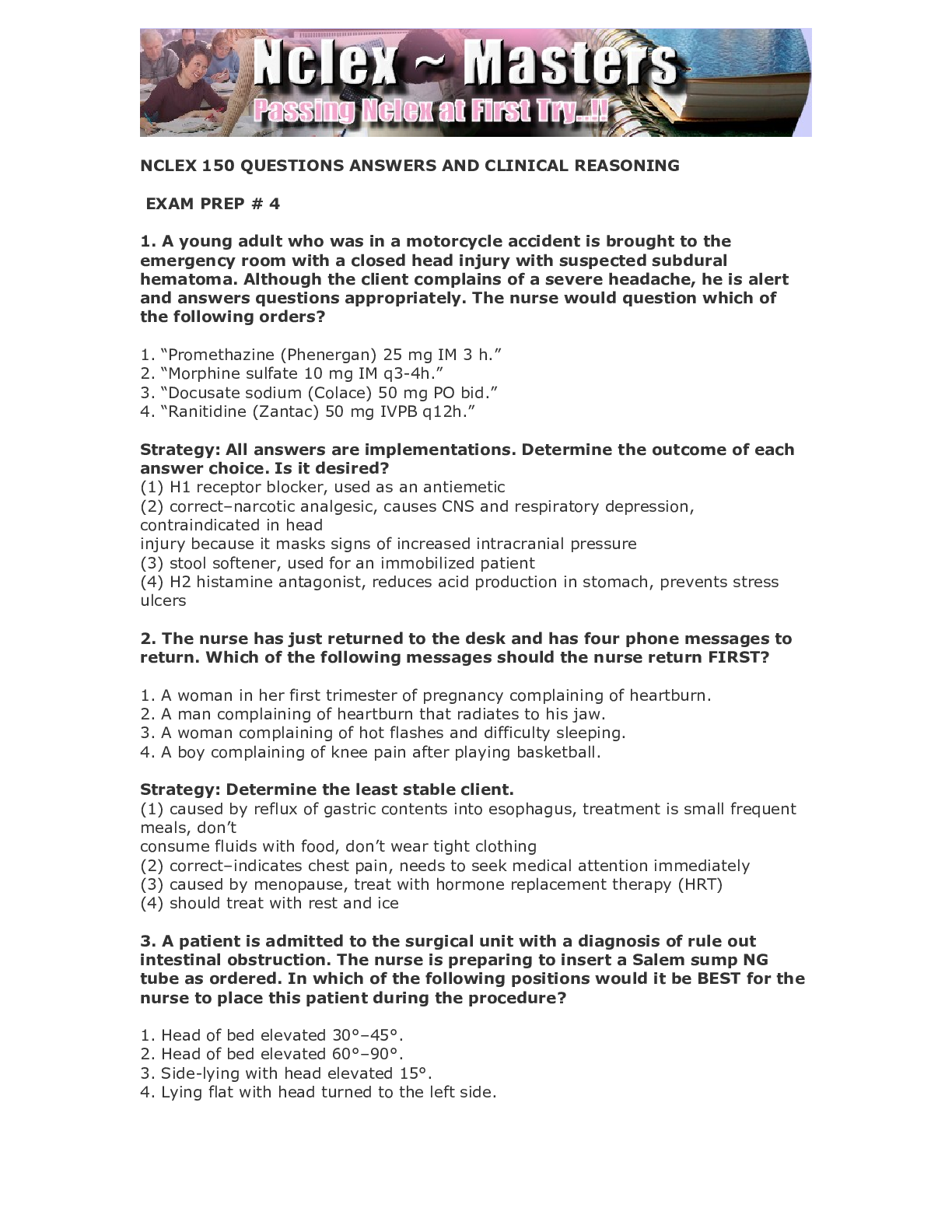
Reviews( 0 )
Document information
Connected school, study & course
About the document
Uploaded On
Apr 18, 2021
Number of pages
53
Written in
Additional information
This document has been written for:
Uploaded
Apr 18, 2021
Downloads
0
Views
33

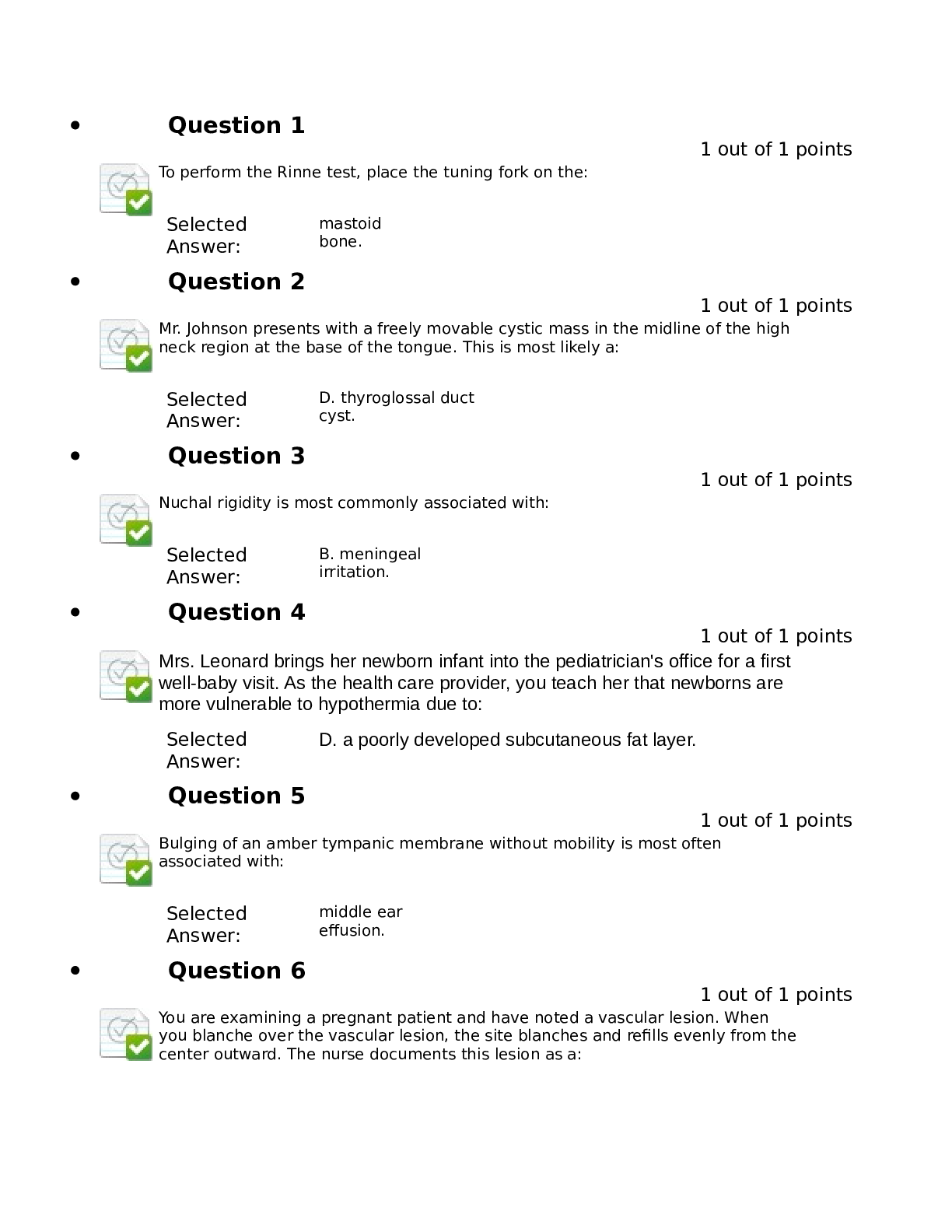
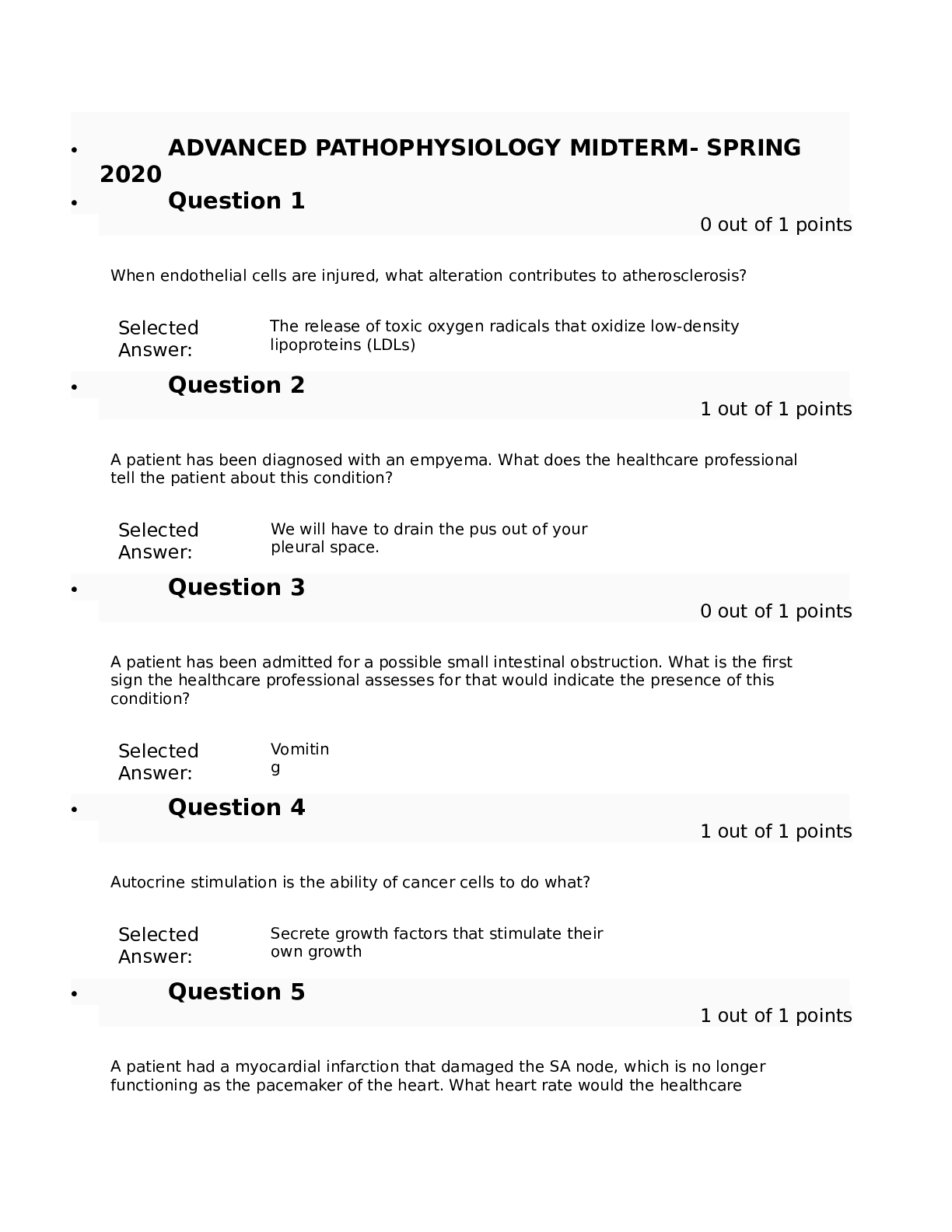
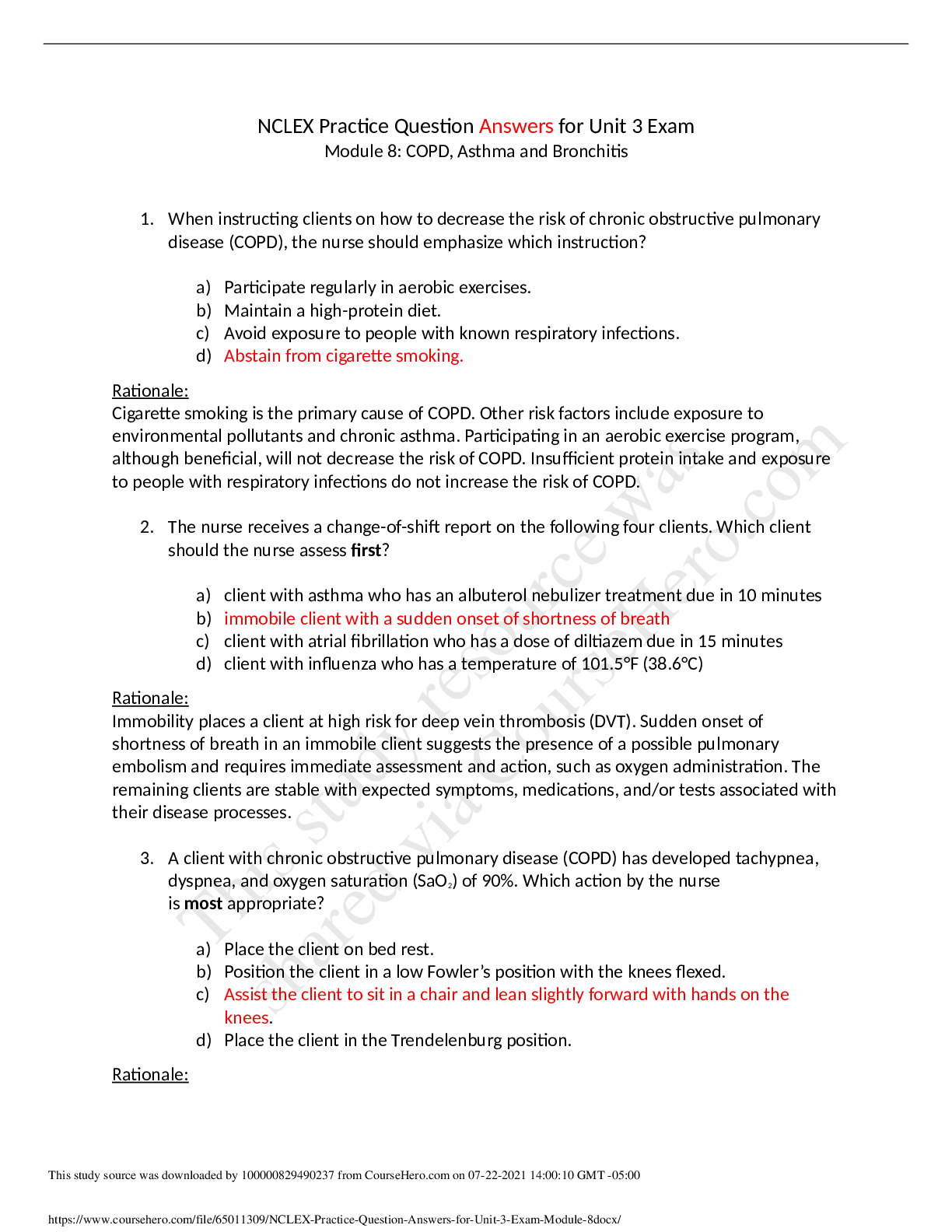
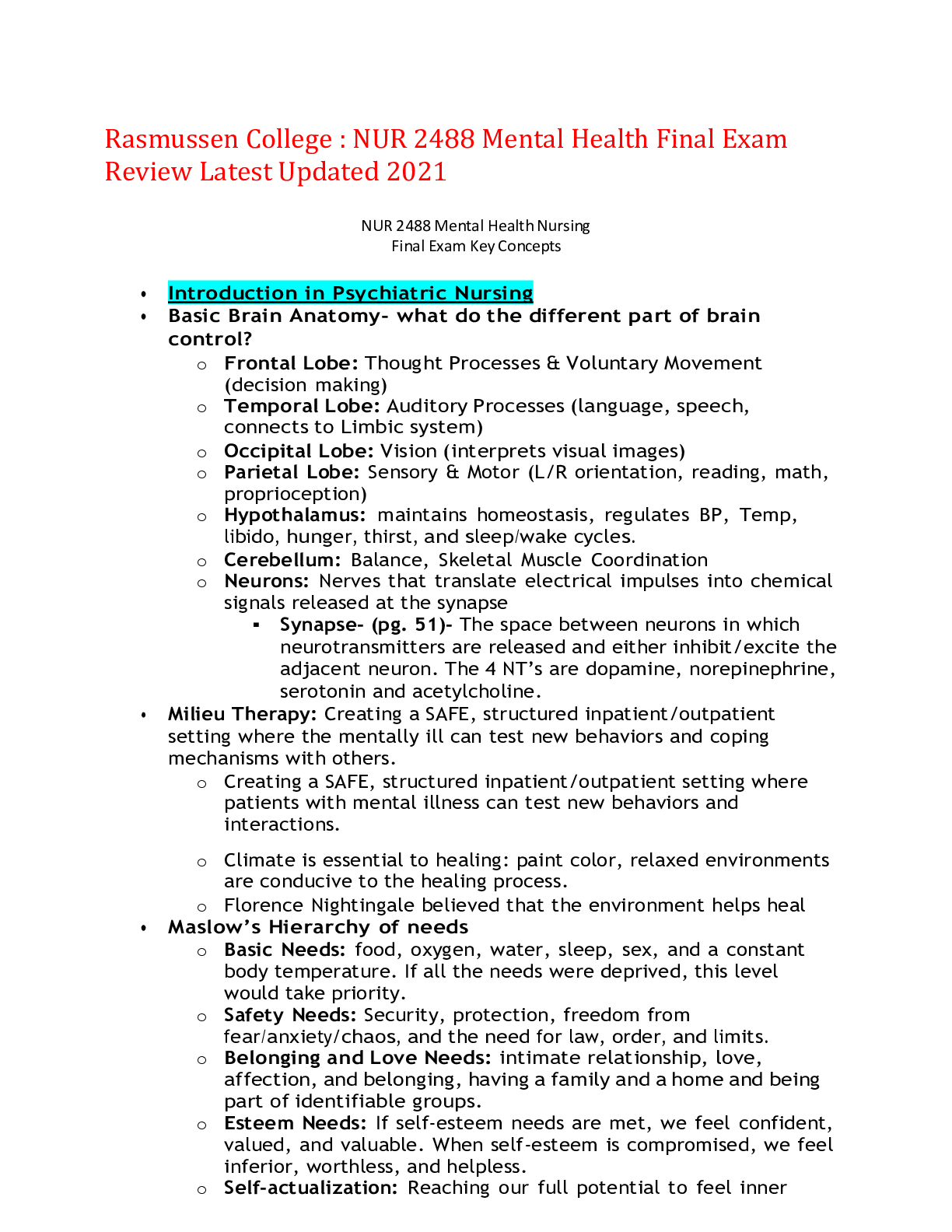
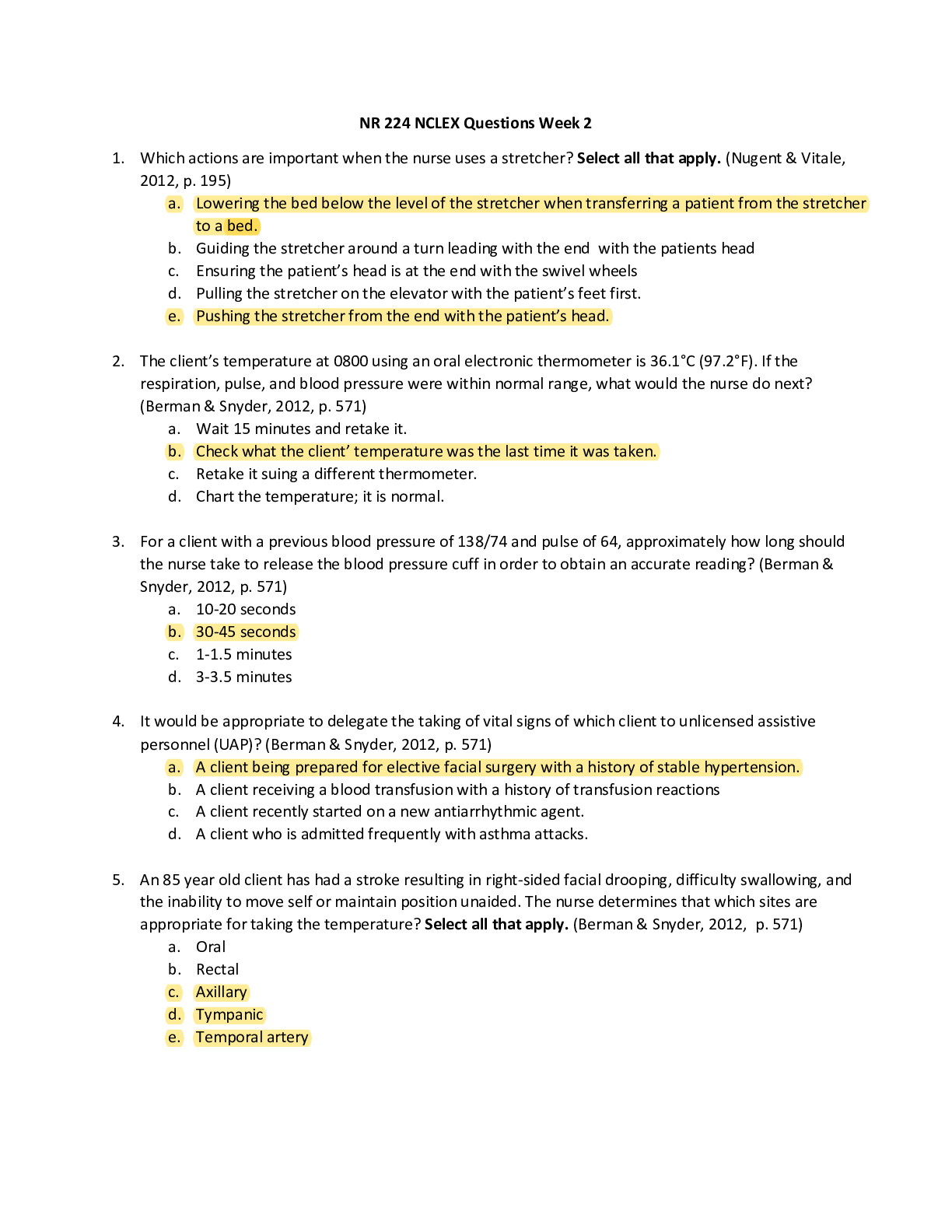
.png)
.png)
.png)

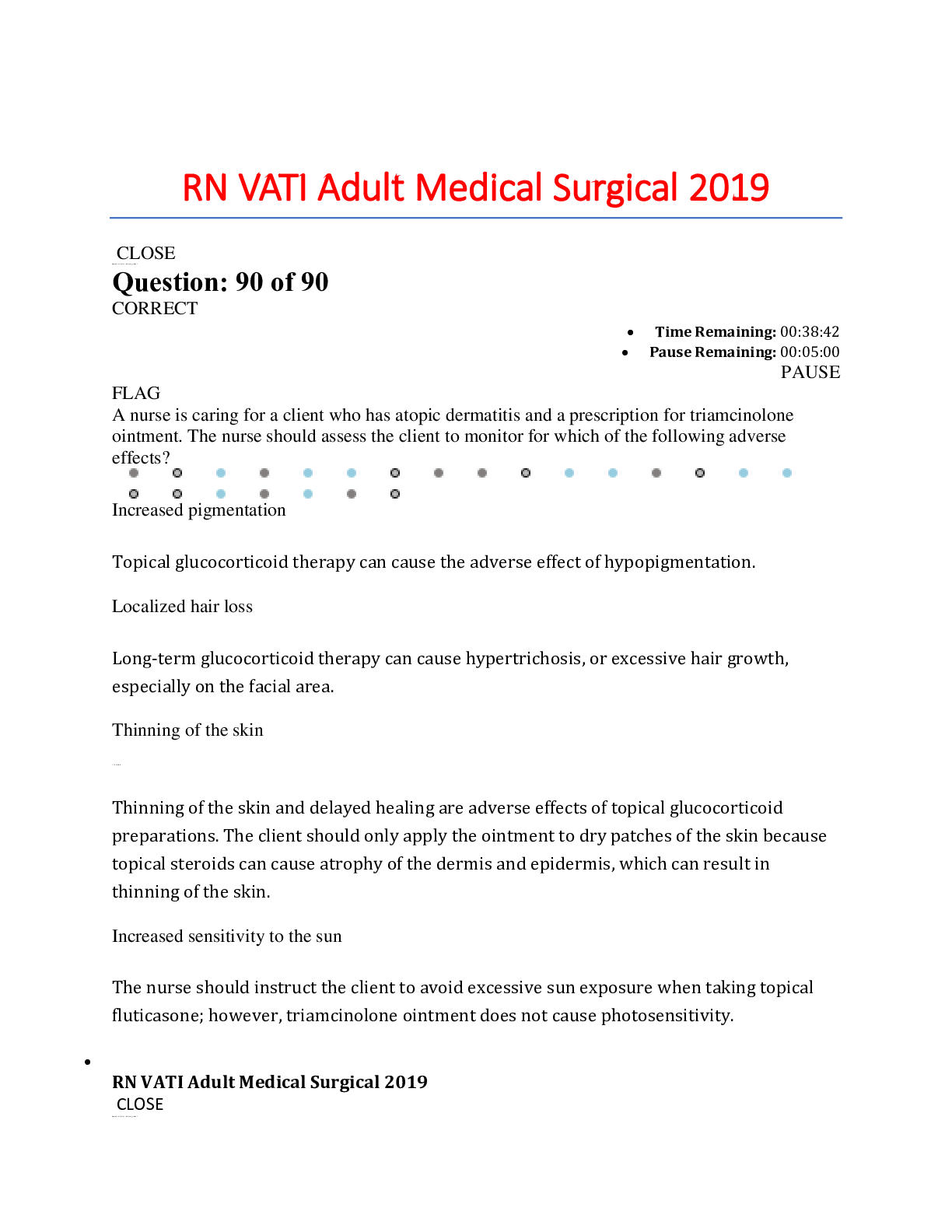
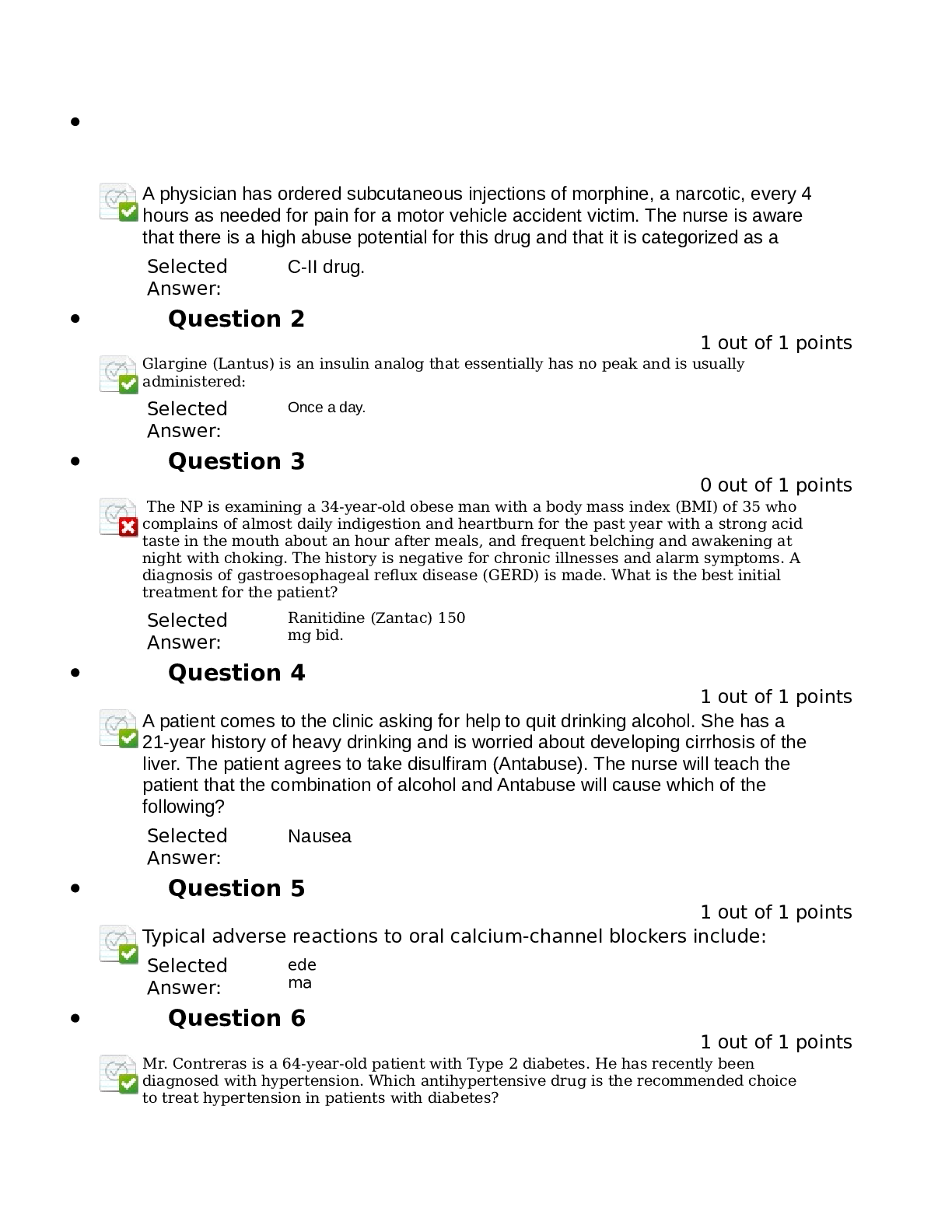
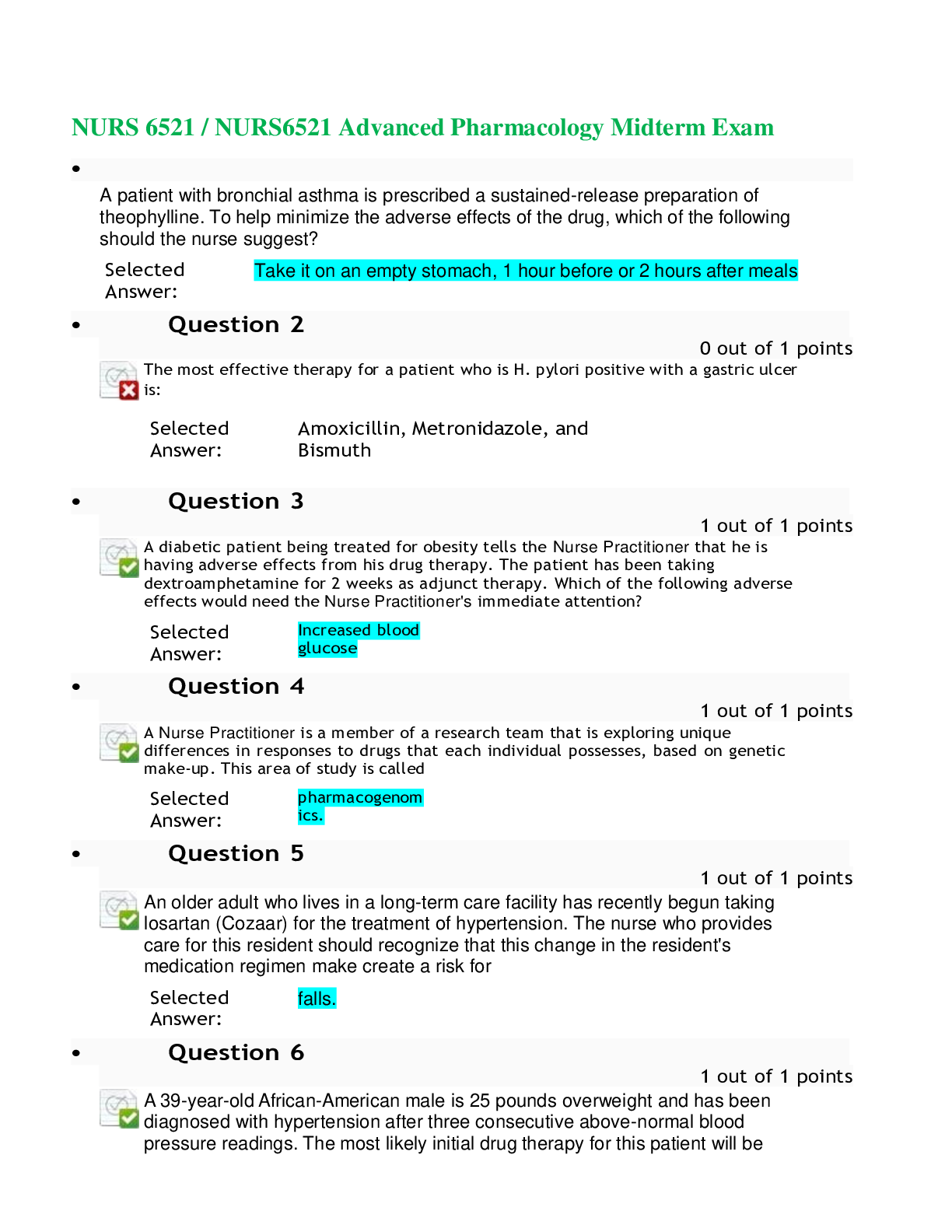

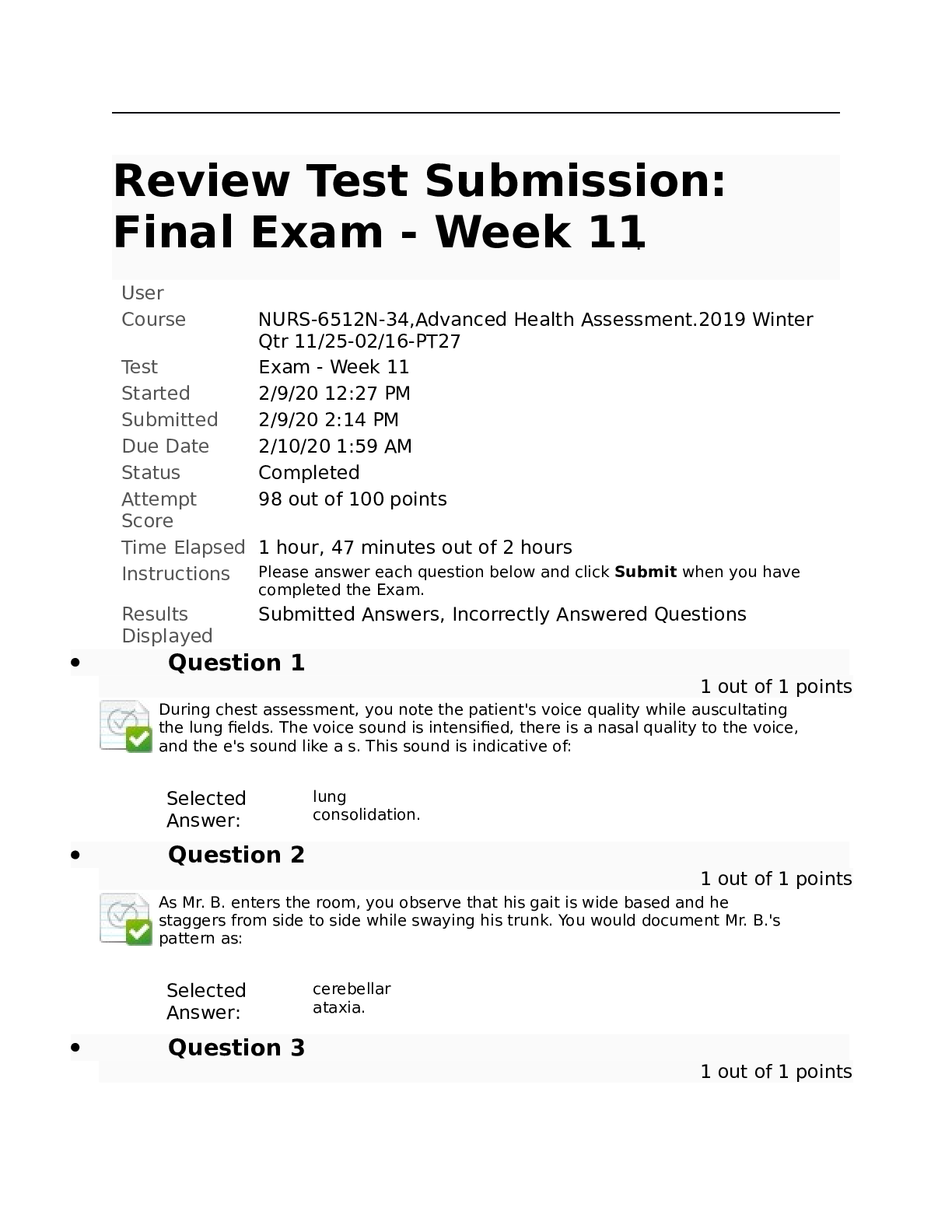
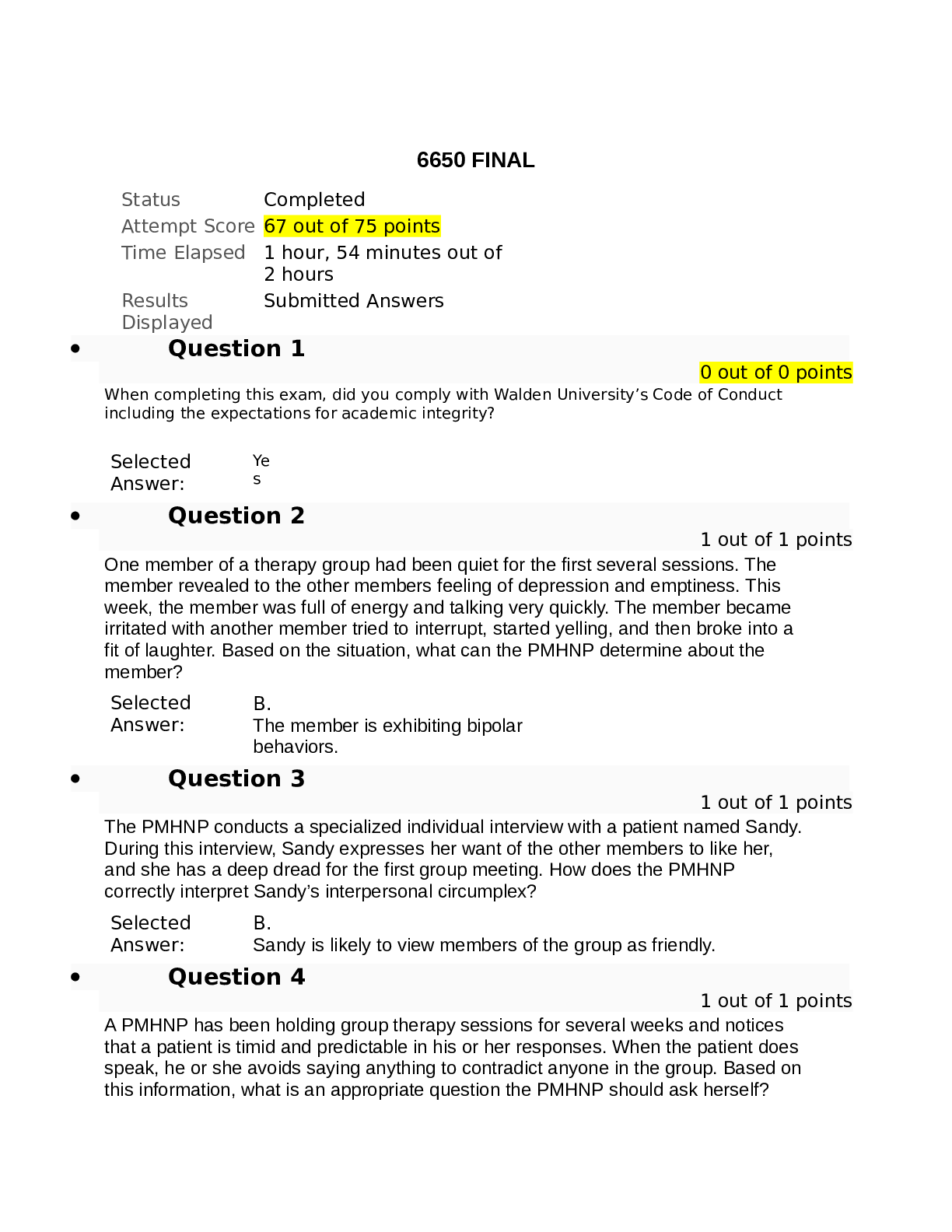



.png)

.png)

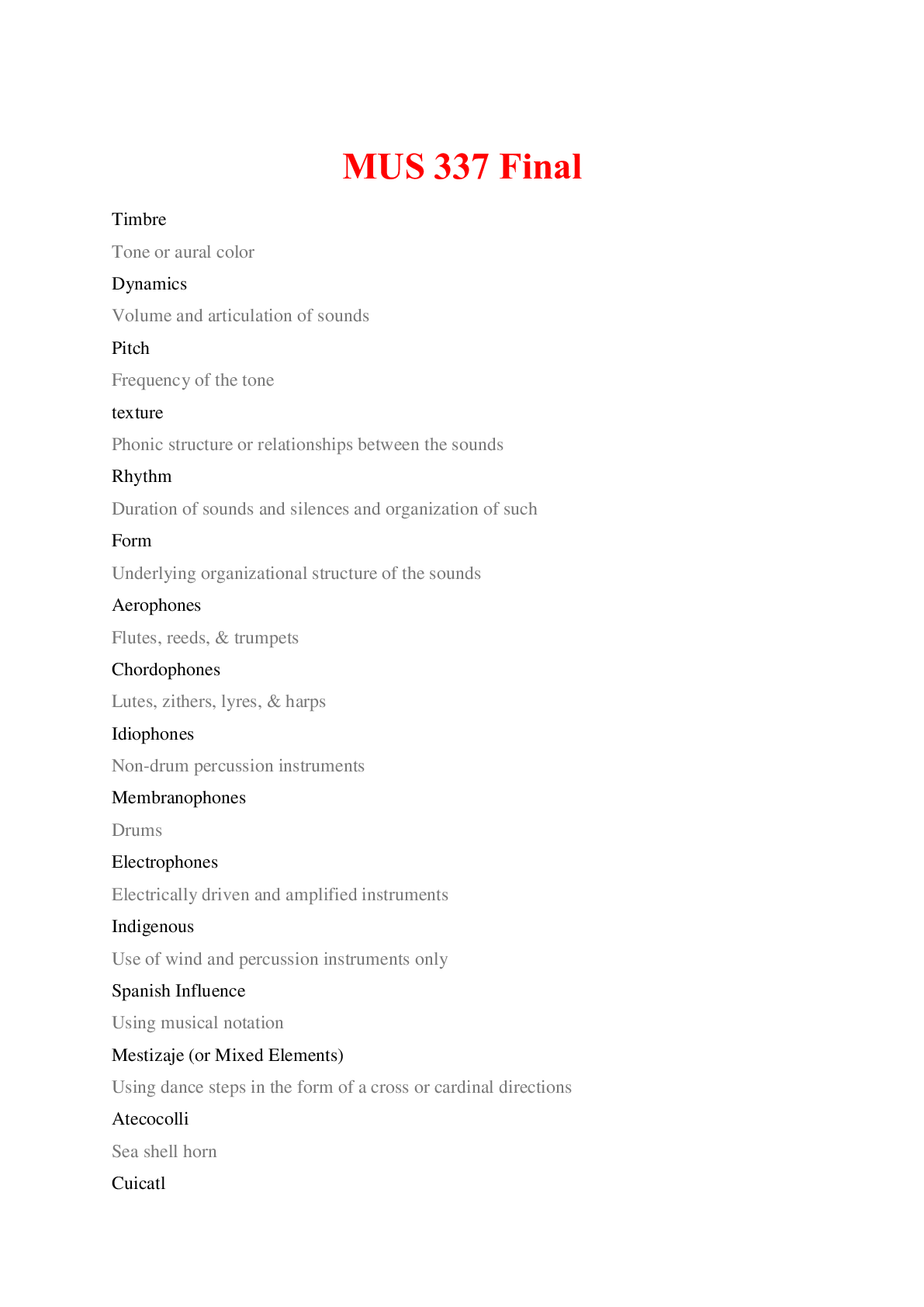

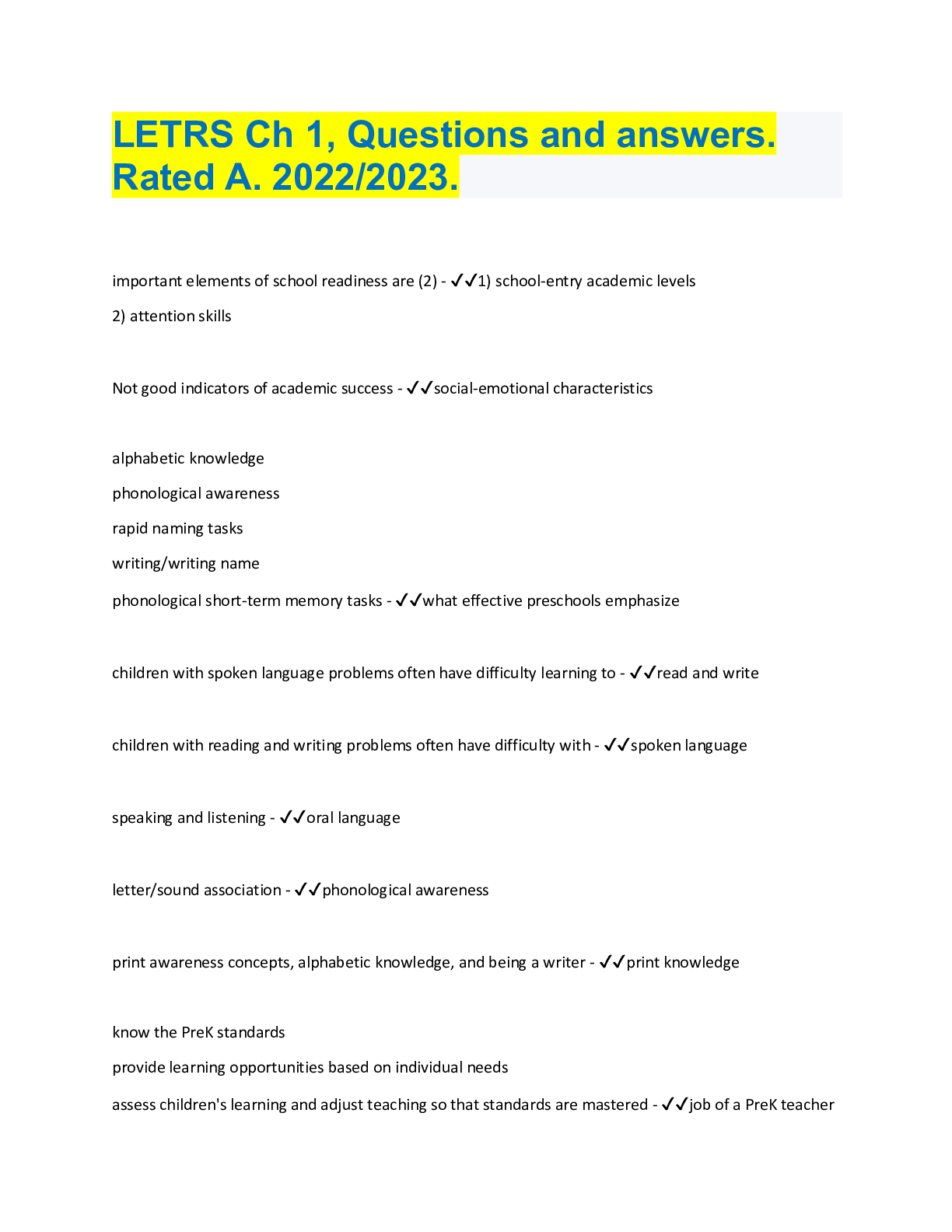
.png)
.png)

.png)
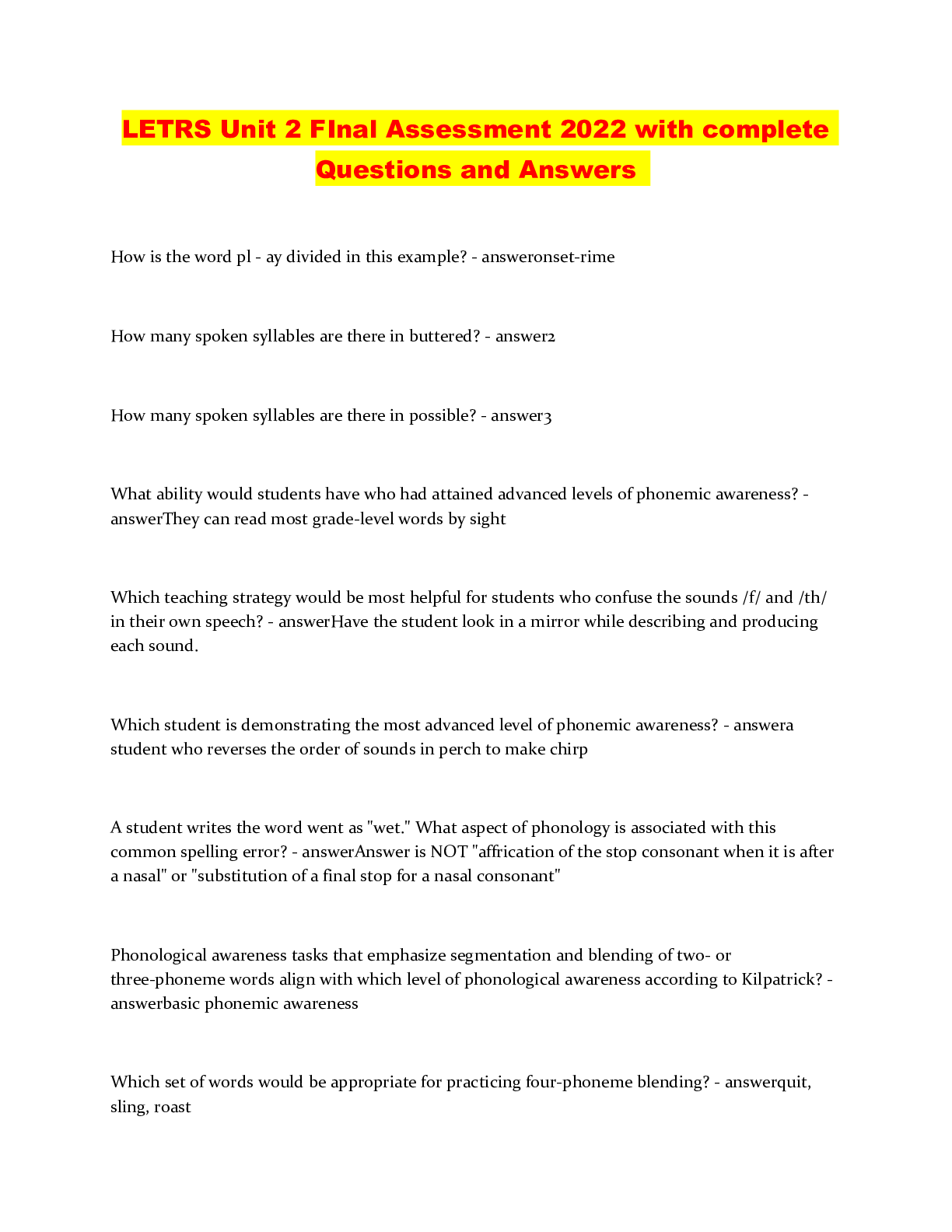



.png)
.png)

